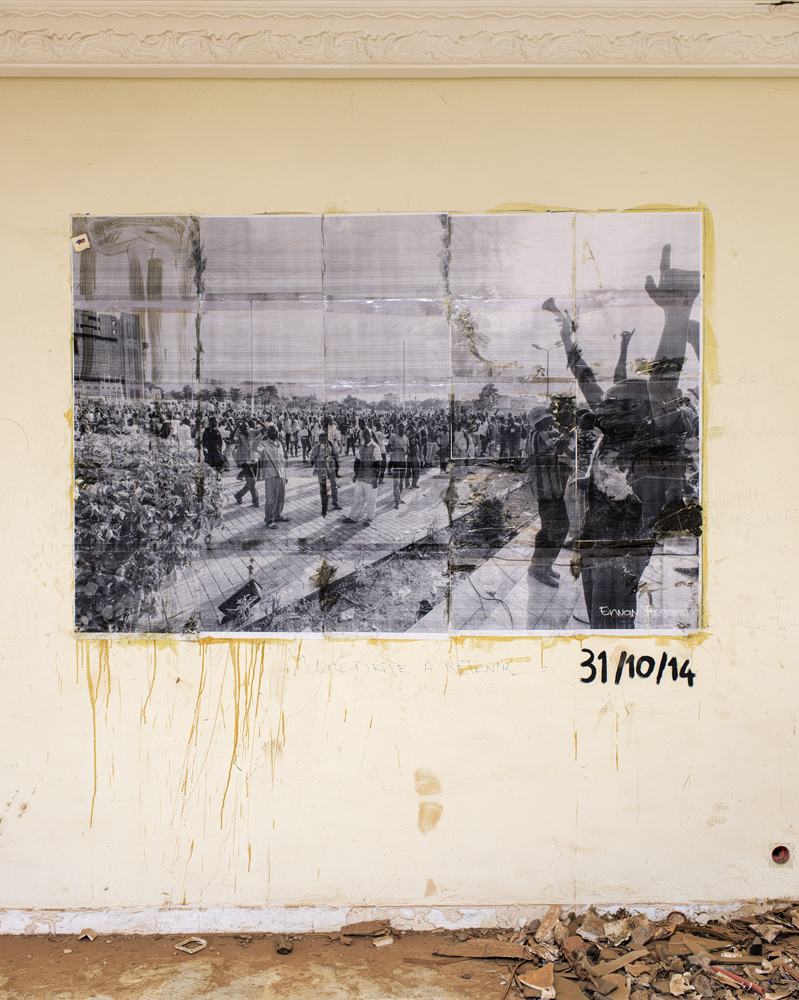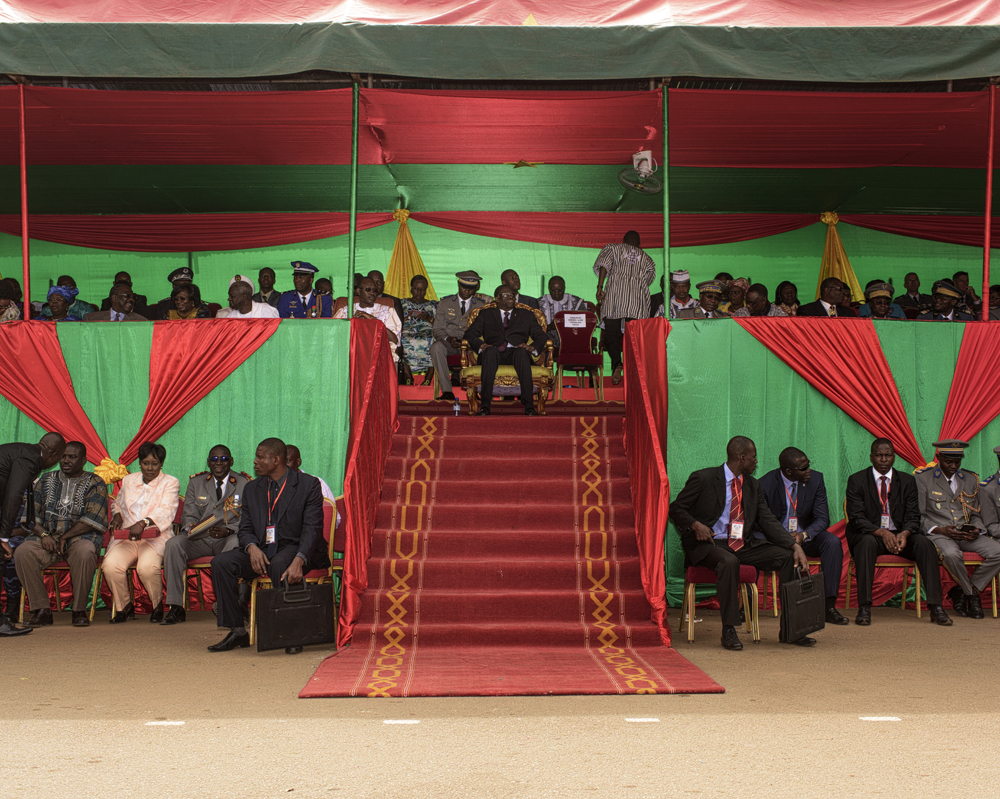
Image: A photograph of the October revolution pasted on the walls of Francois Campaoré’s house. Vandalized soon after the downfall of Blaise Campaoré, the house has become a make-shift museum where visitors come to hear fantastic and imaginative tales of the cruelties and decadence of the Campaoré family. Ouagadougo, Burkina Faso 2016. Copyright @ Asim Rafiqui 2016.
On October 31, 2014 a popular uprising toppled the twenty-seven year dictatorship of Blaise Campaoré. And whereas it was largely reported as a sudden development, the fact is that the uprising was a result of decades of preparation and struggle, and a consequence of the continued arrogance and indifference of the sitting government towards the people. On that October morning, as hand picked parliamentarians gathered at the Hôtel Indépendance to rubber-stamp Blaise Compaoré’s request to permanently extend his 27 years in power, the people of the country came out onto the streets. A few days later, he along with his family, were gone.
The people’s uprising in Burkina Faso remains one of the most important, yet least engaged and reported, political developments in modern African history. Though not unique, it reflects the political and social changes sweeping across a continent where people are speaking out against exploitative and indifferent power. As Mampilly and Branch, when speaking about their recent work on African political movements, Africa Uprising, argued in a recent interview:
“…many in Africa have lost faith in democratic elections as the solution to structural problems. Across the continent, protests have unfolded in countries spanning the democratic spectrum – often, the formal political institutions matter little in determining where protest will take place. We understand this popular disillusionment as part of a broader crisis of political legitimacy in Africa characterized by the increasing distance between state policies and popular demands.”
And these movements – from Ethiopia to South Africa, Senegal to Burkina Faso, are being led by a young generation of Africans. At the forefront of the Burkina Faso uprising were a young generation of politically engaged and activist musicians, artists, intellectuals, and lawyers. Most notably, a movement called Le Balai Citoyenı–The Citizen’s Broom. Carrying within them the ideals and hopes of the Burkinabé political leader Thomas Sankara, inspired by the courage of men like Norbert Zongo, these young people forced Blaise Campaoré from power, and opened the way for a new political direction for the country. They were not alone, as lawyers, labor union members, academics, intellectuals and others, joined the movement and informed its ideals and goals. And they were not the first: Burkina Faso has a long history of people’s resistance to dictatorial rule, and the citizens of this small yet imaginative and inspired nation, have repeated confronted unjust power, paid a price in blood and indignity, but refused to surrender their hopes for a better future.

Image Information: December 11th, 2015 Independence Day celebrations, with commemoration of local heroes, particularly those who were injured or hurt during the uprising against the Campaoré regime, and the coup that followed after his fall. Interim President Michel Kafando views the march past of military and civil services personnel. Copyright @ Asim Rafiqui 2016.
At least that was the narrative that ran in most every single media outlet around the globe. It was also the narrative that most of the young Burkinabé activists and dissidents that I met during my six weeks in the country, told about themselves. But it was, and never could be, just that simple. This project complicates that narrative, and instead goes to the heart of the movement, and the factors that informed it. It places the uprising in its appropriate historical context, it examines the possibility of genuine change, it listens to the lived histories of the people who were part of the movement, it places their lives in the broader historical context, it examines the discourse of the dissent, the history of the state and its support for the very forms of arts and music where dissent was first voiced. But perhaps most importantly–as Paul Gilroy’s asked of us, it ensures that we see the Burkinbé “…as agents, as people with cognitive capacities and even with an intellectual history–attributes denied by modern racism [Gilroy. 1993. 6]. Something truly remarkable was achieved on 21 October, 2014. This project celebrates that achievement, but in the interest of studying social movements, and the many historical, social, political and economic forces that inform it, it refuses the simple narrative.